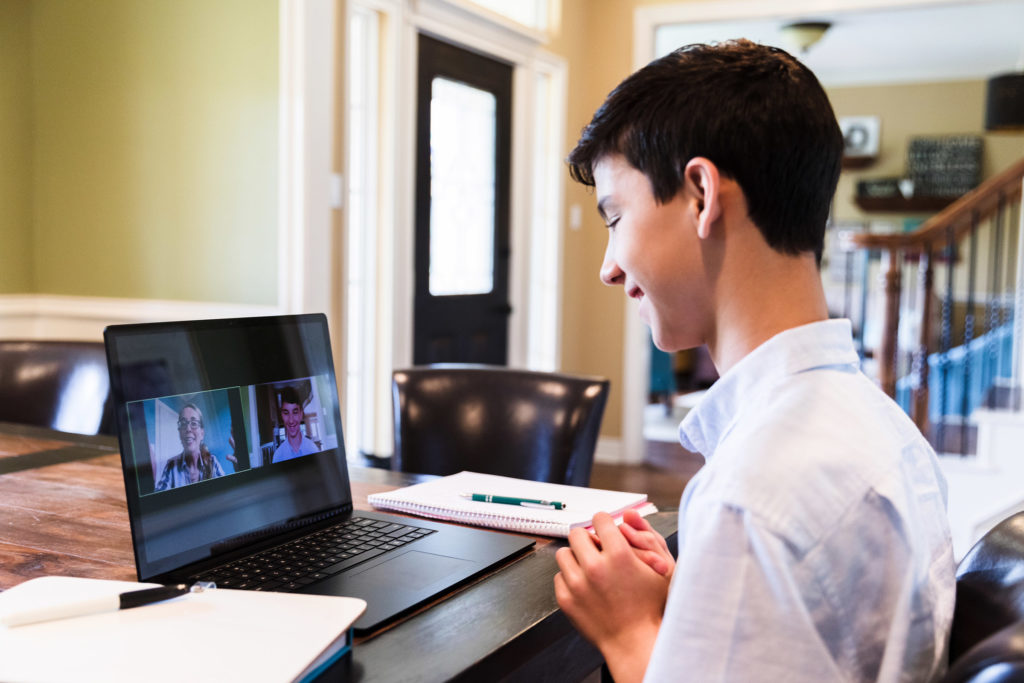School as we knew it has changed, and we are sailing in a different direction. We once worried about students being late for classes and missing assignments, but now our concerns involve students being quarantined and missing instruction with a cloud of COVID-19 fear hovering over their heads. Things are different, there is no doubt about it. It is time we reboot our minds when it comes to remote learning and truly focus on what matters most in any form of learning—community and relational trust.
I have always carried this banner and have tried really hard to continue to deliver this message to my staff as we sail into uncharted waters. Today more than ever, our students need us. They are going through a whirlwind of emotions, and they are trying to adapt to this new form of learning that is so foreign to all of us. As a school leader, I am feeling the stress every day that comes with the new challenges face in education. If I, an adult, have stress and struggles, I can only imagine what our students are going through.
In September, my school district gave parents the choice of what type of learning they wanted for their children, and we started this school year with 60 percent of our students learning in person and 40 percent learning remotely from home. This alone brought challenges with scheduling and staffing, but we got through it and we hit the ground running.
Mask mandates, seating charts in classrooms and lunchrooms, one-directional hallways, classroom cleaning during passing time, and so much more were hurdles we got over with barely an issue. But what really started to trip us up was how to build community with our remote students who we can only see from the screens of our computers. Community, connection, and positive relationships are the foundation learning builds upon, and creating a climate hospitable to education is one of the foundational elements of school leadership, according to the Wallace Foundation. Even in the midst of a pandemic, we need to make sure we have a solid foundation to build on. We can show students how to do math, but at the end of the day it will not be truly effective if we don’t show them we care. We need to make sure we have these right factors in our equation in order to see success in our schools.

Below are three simple practices that you as a school leader can implement today to build community with your students and staff. By leading through example and sharing out the positives occurring in your own practice and relationships, your teachers will be more comfortable doing the same. Let’s reboot our mindsets to what truly mattered when school was “normal” and remember we are all in the same boat together.
- Checking In With Remote Students Outside of the Class Period
I ask teachers to share names of students who are not connecting with school. I started to reach out to these students weekly over the phone and talk with them and their parents to get a clear picture of what they are going through. I began implementing Zoom sessions after school with the students I felt needed a more intensive intervention. In these Zoom sessions, we talk as a small group and open up about the struggles we are having and then create short- and long-term goals for ourselves. We meet biweekly to hold each other accountable and celebrate our successes. - Being a Helping Hand to Remote Students and Families
Many times in my discussions with families, they bring up specific things they need help with. From lack of food for lunches to school supplies and needed technology, as a school leader you need to be a helping hand and find a way to meet those needs. The biggest hurdle we face is the lack of transportation for parents to come up to the school and get lunches, supplies, and technology. As a school leader, you may need to hop in your car every once in a while and do a porch drop off. If Uber can drop off a meal on a front porch, then we can do the same to ensure our students and families have their needs met as we gain a side of trust in the process. - Being the Voice of Empathy
Being a teacher is hard, especially today. With trying to do your job in a situation that you did not sign up for, stress can creep in quickly. It is easy to get frustrated with students who do not attend classes, show up late, won’t keep their cameras on, and are constantly being distracted by things happening in their homes. What you can do as a school leader is continue to remind your teachers that everyone is trying their best. Conversely, going around the school and complaining about this whole remote learning situation and the frustrations you have with your students and parents will open up a can of worms that is hard to close. By being the voice of empathy, you are modeling empathy to your staff. By looking at the glass half full, you are making this situation easier to swallow. Focusing on the negative and the struggle that is all around us will only make things worse, and as a leader it is your job to make things better. So change the flow and make sure empathy is the captain.

